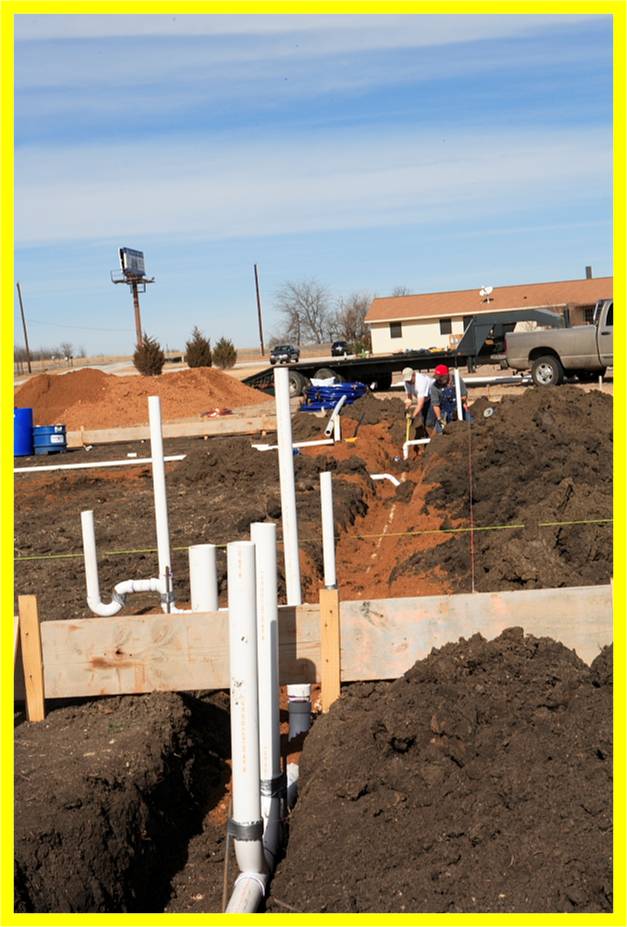Spot The Safety Violation: Keep Away from the Edge of Trenches
Are these piles of excavated material a safe distance from the edge of this trench’

Trenches and excavations are common in many workplaces, particularly in the construction industry. Working in and near these digs is quite dangerous and exposes workers to many safety hazards.
For example, when you dig a trench, you end up with a lot of excavated material that you have to put somewhere. It may be tempting to put it near the excavation, as depicted in this picture from elCOSH, especially if you’ll eventually use the material to refill the trench. But doing so can be hazardous.
The material can fall back into the trench, burying workers inside. Or the weight of the spoil piles can put pressure on the walls of the excavation, causing them to collapse.
TAKE 7 STEPS TO PROTECT WORKERS IN/NEAR EXCAVATIONS
Across Canada, the OHS regulations contain detailed requirements for excavations and trenches. Taking these seven basic steps will help you comply with these requirements and protect workers in and near excavations and trenches:
Step #1: Classify the Soil. Before workers begin work inside a trench or excavation, determine the type of soil in the area to be dug. The soil type will determine the stability of the dig’s walls and what safety measures, if any, will be needed.
Step #2: Identify Any Buried Utilities in Area. Before workers start excavating, you should also identify any buried utilities, such as underground pipes, electrical cables and oil or gas lines, and mark their locations.
Step #3: Safely Locate Excavated Material. As mentioned above, it’s important that you safely locate the material excavated from the excavation or trench. The OHS laws typically bar you from piling excavated material closer than one metre from the excavation’s edge. (The spoil piles in the picture are much closer than one metre from the edge of the trench.) In addition, if the spoil pile is very deep and near the excavation, the shoring you install in the excavation should take into account this additional lateral pressure.
Step #4: Install Shoring, if Required. Excavations that meet certain criteria must have supports placed within the excavation to ‘shore’ or hold up the walls. Without adequate shoring or bracing, the walls of the dig can collapse or cave-in, often with fatal results.
Step #5: Provide Safe Means of Entry and Exit. Once the excavation or trench has been dug and appropriately shored or braced, make sure there’s a safe way for workers to enter and exit it, such as a ladder, stairway or ramp.
Step #6: Ensure Atmosphere Is Safe. The air inside a dig can become toxic, such as if it fills with gas or the oxygen level drops to dangerous levels. And workers may not even realize they’re in danger from a toxic atmosphere until it’s too late. So the OHS laws require employers to take safety precautions to ensure that the atmosphere in an excavation contains sufficient oxygen and is free from hazardous levels of dust, vapour or gases.
Step #7: Protect Workers Outside of Trench/Excavation. Although workers inside trenches and excavations are most at risk, other workers can also get hurt if they should fall into an unprotected trench. For instance, there are no barriers, guardrails or other safeguards around the edge of the trench in the picture to keep workers or others from falling into it.
So to protect workers who are outside of the trench or excavation, most OHS laws require excavations to be covered or protected with a barrier, fence or guardrail to prevent workers, visitors and others on the surface from getting too close to the edge and falling into the dig.
To ensure that your trenches and excavations are safe for workers and compliant, require a ‘competent person’ to inspect them regularly and keep a log or record of these inspections (see, trench/excavation inspection checklist and daily trench/excavation log).